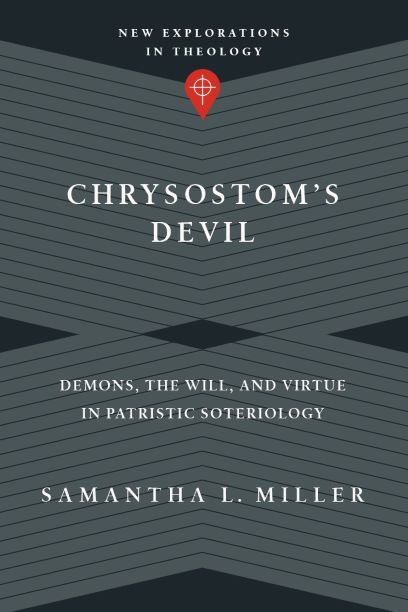Samantha L. Miller
Downers Grove, Illinois: IVP Academic, 2020. 216 pages. Softcover. $36.00.

Reviewed by Eamonn Ferguson on 09/17/2020
Samantha Miller’s work is a commendable piece of scholarship examining a facet of Christianity often overlooked. In Chrysostom’s Devil, Miller examines Christian demonology through the lens of St. John Chrysostom, drawing upon an extensive list of his writings to apply his demonology to a modern audience.
Miller’s work is intended to address the theological framework of Chrysostom’s demonology. As such, it stands out as unique among similar studies whose foci tend toward the “sociohistorical.” This framework includes glimpses into Chrysostom’s historical context, philosophical background, anthropology, and soteriology as inseparable components of his demonology. While thoroughly academic in nature, Miller’s presentation of Chrysostom’s demonology remains approachable and even enjoyable to read—an accomplishment that merits praise given the serious nature of the subject material.
The most pervasive theme throughout Miller’s work is Chrysostom’s highly pastoral approach to the demonic. Unlike other theologians of his era, Chrysostom does not philosophize with curiosity. Instead, his demonology is inherently practical in nature, intended to promote a life of faith and spiritual discipline as well as to provide comfort and encouragement in times of trial. As such, Chrysostom’s demonology as presented by Miller is an encouragement to every pastor, and something all should take the time to study.
It gives value and importance to Christian virtue and right living in the understanding that the demonic can and do strive to assault the people of God, but also comfort in the knowledge that no such assaults can cause true harm. Additionally, Chrysostom’s demonology gives encouragement in the knowledge that the demonic have far less power than they are popularly ascribed. In the raging battle of the faith, it is a blessed word of gospel to the struggling faithful to see the true weakness of the foe. However, the weakness of the demonic also eradicates any excuse for man’s sin as being anything other than a forfeiture of the will to temptation. Thus, Chrysostom’s demonology is never separate from an admonition toward virtue.
Miller concludes helpfully by offering “Implications for the Church Today.” Here, she applies Chrysostom’s demonology to issues plaguing the modern church and culture, reinforcing the inherently pastoral nature of Chrysostom’s approach.
Chrysostom’s Devil is highly recommended to all pastors, both for the practical approach to the demonic as well as the rich theology. It is also recommended for those interested in patristic soteriology or early demonology. Easy to read, well researched, and comprehensive, Miller’s work is an excellent presentation of Chrysostom’s rich theology.



